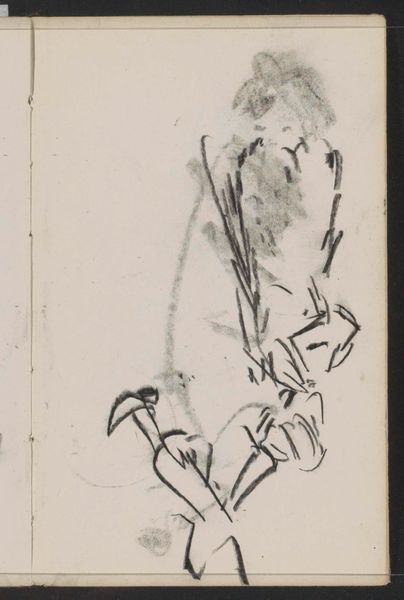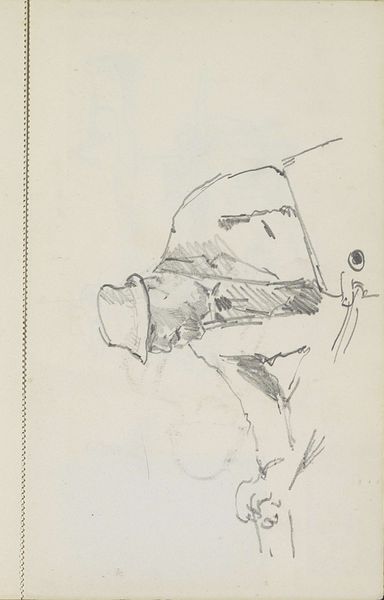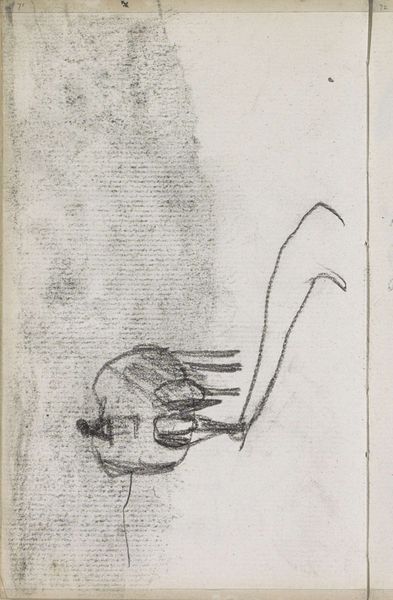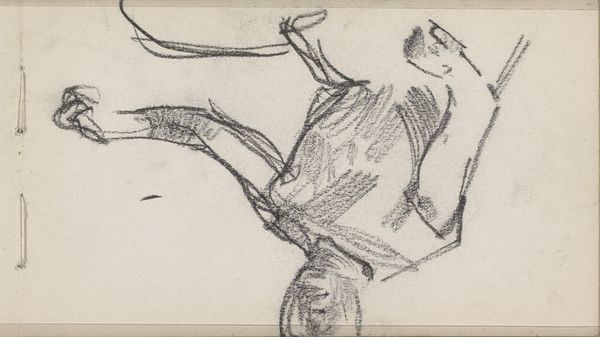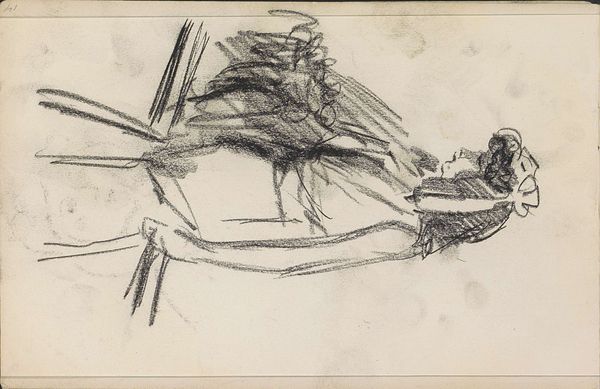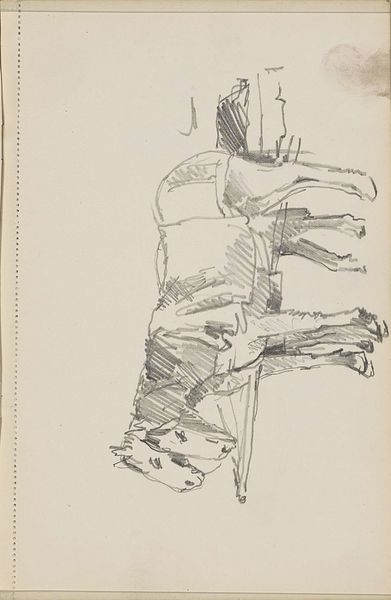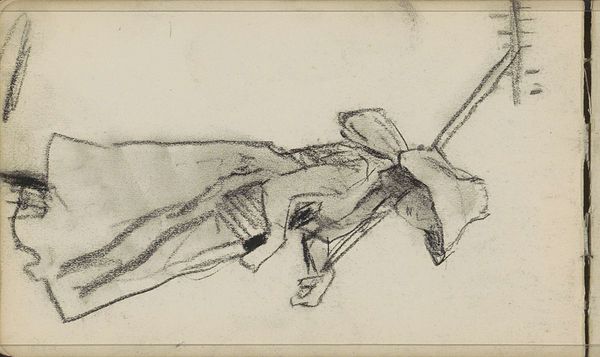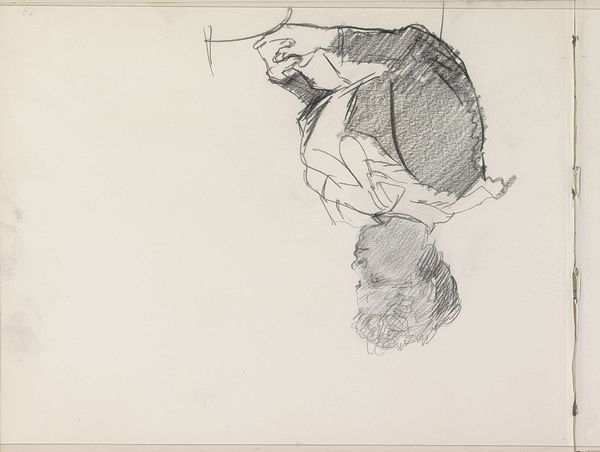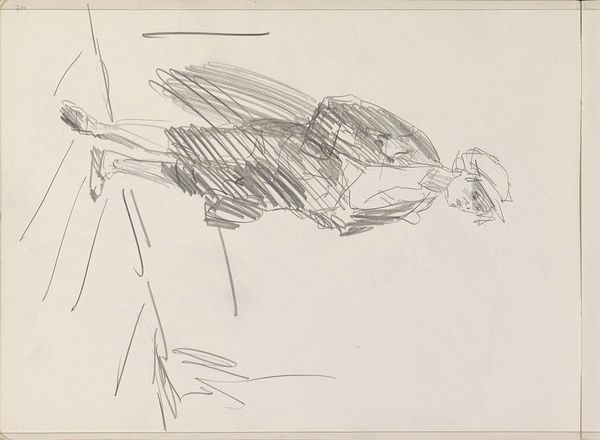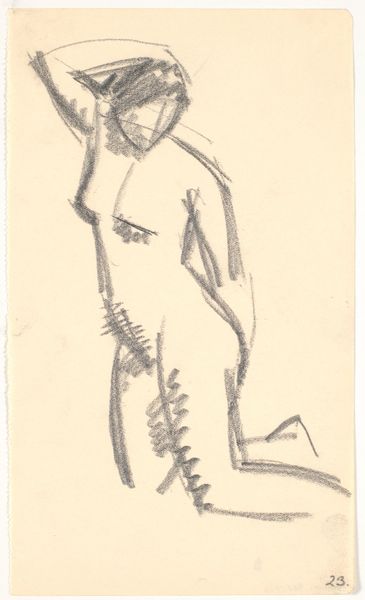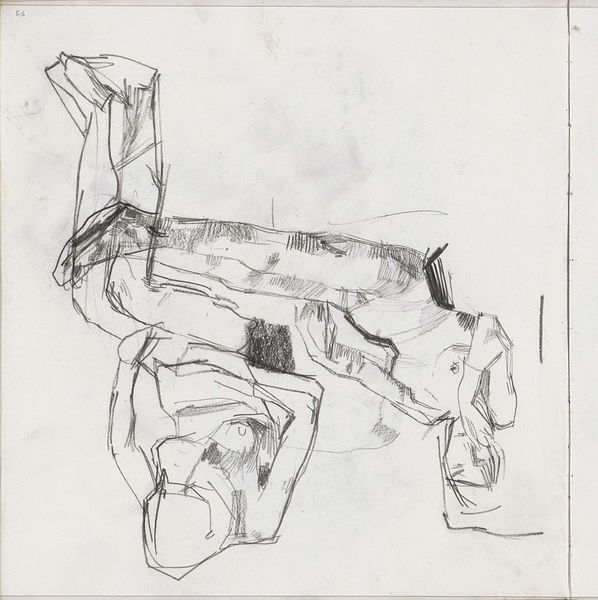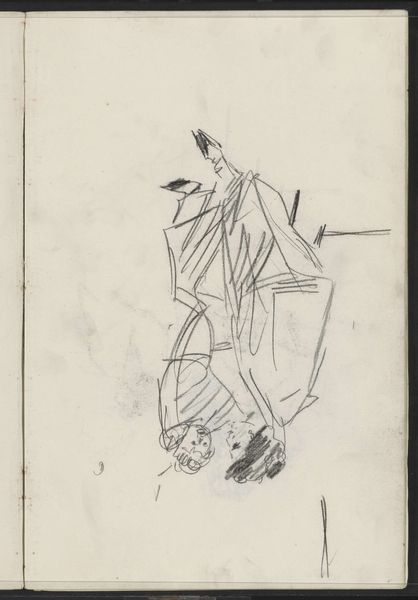
drawing, graphite
#
portrait
#
drawing
#
figuration
#
form
#
graphite
Dimensions: height 204 mm, width 164 mm
Copyright: Rijks Museum: Open Domain
Theo Nieuwenhuis sketched this intriguing chameleon with charcoal on paper. The composition is dominated by the twisting form of the chameleon as it clings to a branch. Nieuwenhuis uses line and shading to create a sense of depth and texture, particularly noticeable in the chameleon's body and the rough bark of the branch. The creature’s form is at once representational, yet it verges on abstraction as the lines become more simplified and expressive. Consider the chameleon as a sign. Its ability to change color is a potent symbol, an idea that destabilizes fixed meanings and plays with the notion of identity as something fluid. Nieuwenhuis' loose handling of the medium reinforces this fluidity, suggesting that form itself is subject to change and adaptation. The sketch, with its emphasis on line and form, invites us to consider how meaning is constructed through the interplay of visual elements and broader cultural associations. It's a reminder that art is not just about representation but also about the very process of interpretation.
Comments
No comments
Be the first to comment and join the conversation on the ultimate creative platform.
